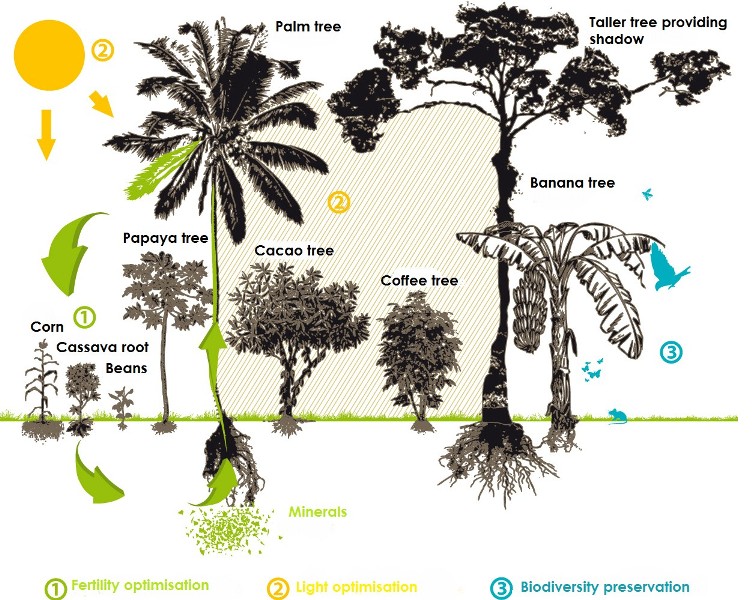Agroforestry: Difference between revisions
Siterunner (talk | contribs) No edit summary |
Siterunner (talk | contribs) No edit summary |
||
| Line 72: | Line 72: | ||
Neil Logan / Sophia Bowart | Neil Logan / Sophia Bowart | ||
Tammy Davis | Tammy Davis / Keith D'Agostino ... | ||
* http://www.farmcenter.org/who-we-are.html | * http://www.farmcenter.org/who-we-are.html | ||
Revision as of 16:16, 4 April 2020
Explore a Vibrant Forest Garden
An Amazing How-to Story in the UK
Martin Crawford growing a wondrous forest garden
Agroforestry ... Edible Landscapes, The Food Forest Revolution
Industrial agriculture, monoculture, brings unsustainable impacts with loss of forest land and loss of fertile soil. Big corporate petro-chemical growing regimens lead to water pollution, aquifer depletion, environmental and adverse health impacts. The reduction of critical CO2 absorption that forests provide is becoming a profound problem. What can agro-forests provide as an alternative to industrial ag?
·············································
From the Edible Landscapes Filmmaker
Increasing food production by expanding conventional agriculture leads directly to large-scale deforestation which in turn is destroying biodiversity, damaging water cycles, and driving devastating climatic change.
Rethinking forests as our food larder is the only way to simultaneously stop deforestation while providing food through a democratic supply chain.
A forest garden or food forest is a plant growing system modeled on the structure of a young natural woodland, utilizing plants that bring direct and indirect benefits to people - mostly edible plants. Humanity has been producing abundant food in forest gardens since the dawn of civilization. The crops which can be produced include fruits, nuts, edible leaves, spices, medicinal plant products, poles, fibres, basketry materials, honey, fuelwood, fodder, mulches, sap products, and on and on...
The structure and diversity of forest gardens ensure that they are resilient to the impacts of climate change including extreme weather conditions like droughts and heavy rain. The beauty of forest gardens is that they are so perfectly suited to collective engagement, functioning as well in urban spaces as in rural ones.
·············································
Agroforestry, a Model for a Thriving Future
- https://youtu.be/tm_LjHV47C8 (Video presentation)
Moving to sustainability, resilience, smart ag, independent ag, localism, community-based, planning and self-sufficiency...
Perennial species, especially trees and tree 'gardens' in the attainment of improved staple crop yields; provision of nutritious traditional food; the reduction of poverty, hunger, malnutrition while reducing environmental degradation; the improvement of rural livelihoods; and mitigation of climate change with a programme of Integrated Rural Development...
○
Agroforestry Educational Videos
○
Farm Center: Reforestation in Hawaii
Neil Logan / Sophia Bowart
Tammy Davis / Keith D'Agostino ...
○
The Word Is Out: Agroforestry
Craig Elevitch
The term agroforestry is a relatively new word in the English language that describes agricultural practices, such as many of those employed by Pacific Islanders for millennia.
The word refers to the practice of growing trees combined with crops and/or animals in ways that create benefits from their interactions. The term agroforestry applies to food forests, shade-grown cropping, windbreaks, timber trees with livestock, trees for coastal protection, and many other practices. All of these agricultural systems can increase productivity compared with conventional agriculture. Agroforestry systems tend to have less pest and disease problems, provide natural weed control, and require less fertilizer and other outside inputs compared with conventional agriculture. They also provide long-term benefits for the soil and watershed.
Food forests are an enduring example of agroforestry.
○
Agroecology
Agroforestry
○
